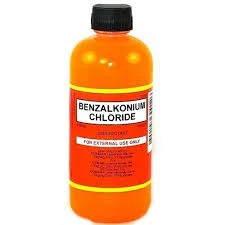Flocculant Chemicals for Water Treatment in Environmental Applications and Their Effectiveness
The Role of Water Flocculation Chemicals in Water Treatment
Water is an essential resource for life, and its quality significantly impacts health and the environment. In order to ensure clean, safe water supply, various water treatment processes must be employed. Among these processes, flocculation plays a crucial role, utilizing flocculation chemicals to remove impurities and pollutants from water.
Flocculation is a process in which fine solid particles (colloids) suspended in water aggregate together to form larger clusters, known as flocs. This process greatly enhances the efficiency of subsequent sedimentation and filtration, leading to cleaner water. Flocculation is particularly effective in removing suspended solids, organic matter, and even some pathogens, thus improving water quality.
The effectiveness of flocculation largely depends on the type of chemicals used. There are several categories of flocculation chemicals, including coagulants, coagulant aids, and flocculants. Coagulants, such as aluminum sulfate (alum) and ferric chloride, work by neutralizing the charges on suspended particles, promoting aggregation. Coagulant aids, such as anionic or cationic polymers, enhance this process by providing additional binding sites. Flocculants, typically high-molecular-weight organic compounds, further promote the formation of larger flocs, allowing for easier removal during treatment.
Aluminum sulfate is one of the most widely used coagulants due to its effectiveness and cost-efficiency. It reacts with natural alkalinity in the water to form aluminum hydroxide, which serves as a sticky substance that captures suspended solids. However, excessive use of aluminum sulfate can lead to residual aluminum in treated water, which may pose health risks. As a result, there has been a growing interest in exploring alternative coagulants, such as polyaluminum chloride (PAC) and ferric sulfate, which may offer lower residuals and improved performance.
water flocculation chemicals

The application of flocculation chemicals is not without challenges. The correct dosage is crucial; too much chemical can lead to over-coagulation, while too little may result in ineffective treatment. Operators must continuously monitor water quality parameters such as pH, turbidity, and the presence of organic matter to optimize the chemical dosing process. Moreover, the use of chemicals in water treatment raises environmental concerns. Some flocculants and coagulants can contribute to the production of sludge, which must be disposed of properly to prevent soil and water contamination.
To mitigate these challenges, advances in technology and research are paving the way for more sustainable practices in flocculation. Innovations such as bio-based flocculants derived from natural sources (e.g., plant-based materials or bacteria) are gaining traction. These alternatives promise to be more environmentally friendly while offering effective flocculation properties.
Another exciting development is the integration of automated monitoring and control systems that enable real-time adjustments of chemical dosing
. This not only enhances treatment efficiency but also minimizes chemical consumption and waste.In conclusion, water flocculation chemicals play a pivotal role in the treatment of water, ensuring that it is free from harmful contaminants. While traditional coagulants and flocculants are effective, the industry is moving towards more sustainable alternatives that minimize environmental impact. By continuing to advance our understanding of flocculation processes and embracing new technologies, we can improve water treatment practices and contribute to a cleaner, healthier planet. As the demand for clean water grows, the importance of effective flocculation in water treatment cannot be overstated.
-
Water Treatment with Flocculant Water TreatmentNewsJun.12,2025
-
Polymaleic AnhydrideNewsJun.12,2025
-
Polyaspartic AcidNewsJun.12,2025
-
Enhance Industrial Processes with IsothiazolinonesNewsJun.12,2025
-
Enhance Industrial Processes with PBTCA SolutionsNewsJun.12,2025
-
Dodecyldimethylbenzylammonium Chloride SolutionsNewsJun.12,2025





